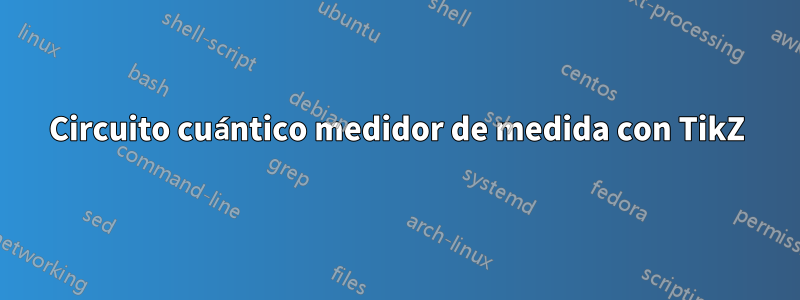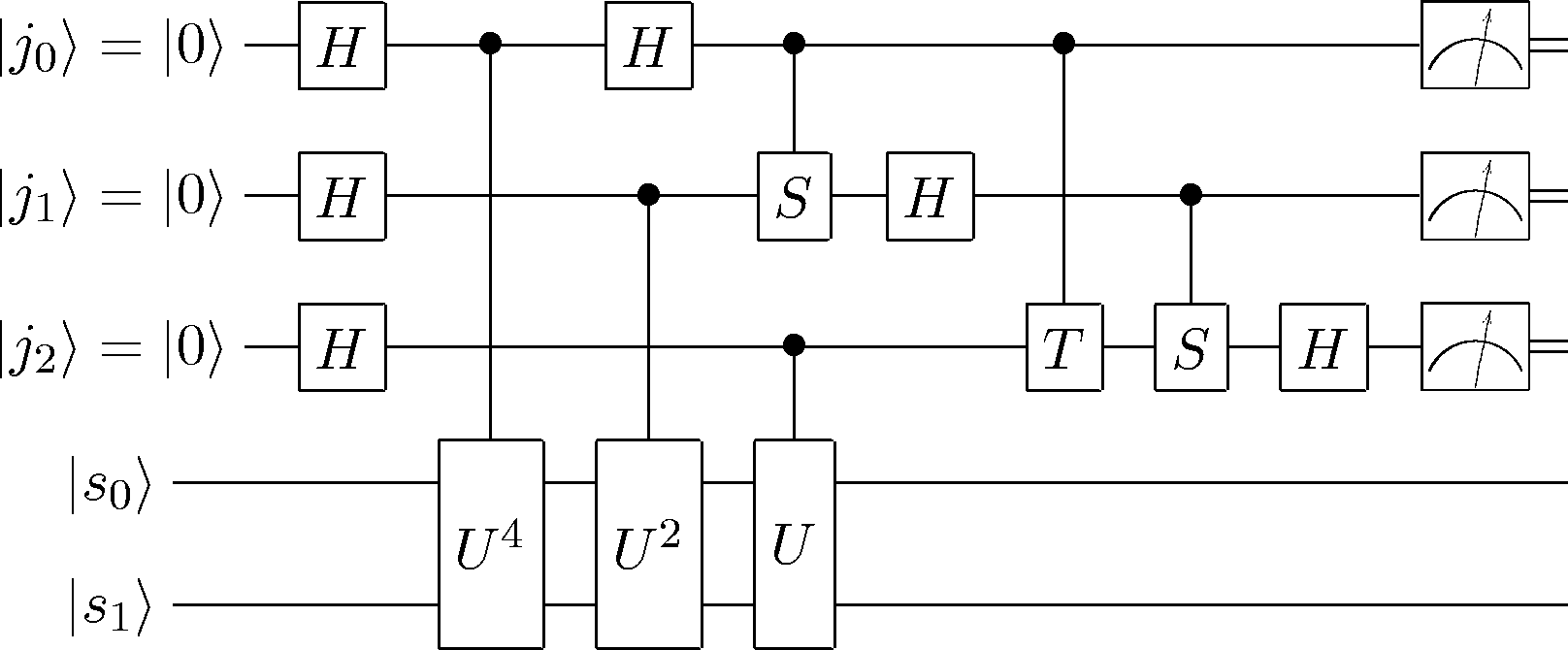
Estoy intentando enviar mensajes de texto a un circuito cuántico usando TikZ. Sé que quiero agregar un medidor de medición como el que se muestra aquí en el lado derecho:
 se agradece cualquier ayuda.
se agradece cualquier ayuda.
\documentclass{standalone}
\usepackage{tikz}
\usetikzlibrary{arrows,decorations.pathreplacing}
\begin{document}
\begin{tikzpicture}
\draw[thick,decorate,decoration={brace},xshift=-4pt,yshift=0pt]
(0,0) -- (0,1) node [black,midway,xshift=-1cm] {Input $\rho^{(i)}$};
\draw[thick,->] (0,1)--node[midway,above]{\footnotesize System $A$}(2,1);
\draw[thick,->] (0,0)--node[midway,above]{\footnotesize System $B$}(2,0);
\draw[thick] (2,-0.5) rectangle (3,1.5) node [pos=.5]{$U_\varepsilon$};
\draw[thick,->] (3,1)--(6,1);
\draw[thick,->] (3,0)--(4,0);
\draw[thick] (4,-0.5) rectangle (5,0.5) node[pos=.5]{$T$};
\draw[thick,->] (5,0)--(6,0);
\draw[thick,decorate,decoration={brace,mirror},xshift=4pt,yshift=0pt]
(6,0) -- (6,1) node [black,midway,xshift=1.35cm] {Output $\rho^{(i+1)}$};
\draw[thick,->,dashed,rounded corners] (7,0.2)--(7,-1)--node[midway,below]
{as long as $i+1<n$}(-1.5,-1)--(-1.5,0.2);
\end{tikzpicture}
\end{document}
Respuesta1
Al principio, supuse que estabas usando quizás circuitikz, un paquete que tal vez deberías examinar, pero luego publicaste tu código. Sin embargo, aquí hay una solución que podría usarse con ambos enfoques:
(Como no sé dónde quieres colocar el medidor, reemplacé el nodo T en tu imagen).
\documentclass[border=5mm,tikz]{standalone}
\usepackage{circuitikz}
\usetikzlibrary{arrows,decorations.pathreplacing}
\begin{document}
\tikzset{meter/.append style={draw, inner sep=10, rectangle, font=\vphantom{A}, minimum width=30, line width=.8,
path picture={\draw[black] ([shift={(.1,.3)}]path picture bounding box.south west) to[bend left=50] ([shift={(-.1,.3)}]path picture bounding box.south east);\draw[black,-latex] ([shift={(0,.1)}]path picture bounding box.south) -- ([shift={(.3,-.1)}]path picture bounding box.north);}}}
\begin{circuitikz}
\node[meter] (meter) at (0,0) {};
\draw (-4,0) to[twoport,t=$H$] (meter.west);
\draw(meter.10) -- ++(1,0);
\draw(meter.-10) -- ++(1,0);
\end{circuitikz}
\begin{tikzpicture}
\draw[thick,decorate,decoration={brace},xshift=-4pt,yshift=0pt]
(0,0) -- (0,1) node [black,midway,xshift=-1cm] {Input $\rho^{(i)}$};
\draw[thick,->] (0,1)--node[midway,above]{\footnotesize System $A$}(2,1);
\draw[thick,->] (0,0)--node[midway,above]{\footnotesize System $B$}(2,0);
\draw[thick] (2,-0.5) rectangle (3,1.5) node [pos=.5]{$U_\varepsilon$};
\draw[thick,->] (3,1)--(6,1);
\node[meter] (meter) at (4.5,0) {};
\draw[thick,->] (3,0)--(meter);
\draw[thick,->] (meter)--(6,0);
\draw[thick,decorate,decoration={brace,mirror},xshift=4pt,yshift=0pt]
(6,0) -- (6,1) node [black,midway,xshift=1.35cm] {Output $\rho^{(i+1)}$};
\draw[thick,->,dashed,rounded corners] (7,0.2)--(7,-1)--node[midway,below]
{as long as $i+1<n$}(-1.5,-1)--(-1.5,0.2);
\end{tikzpicture}
\end{document}
Rendimientos:




